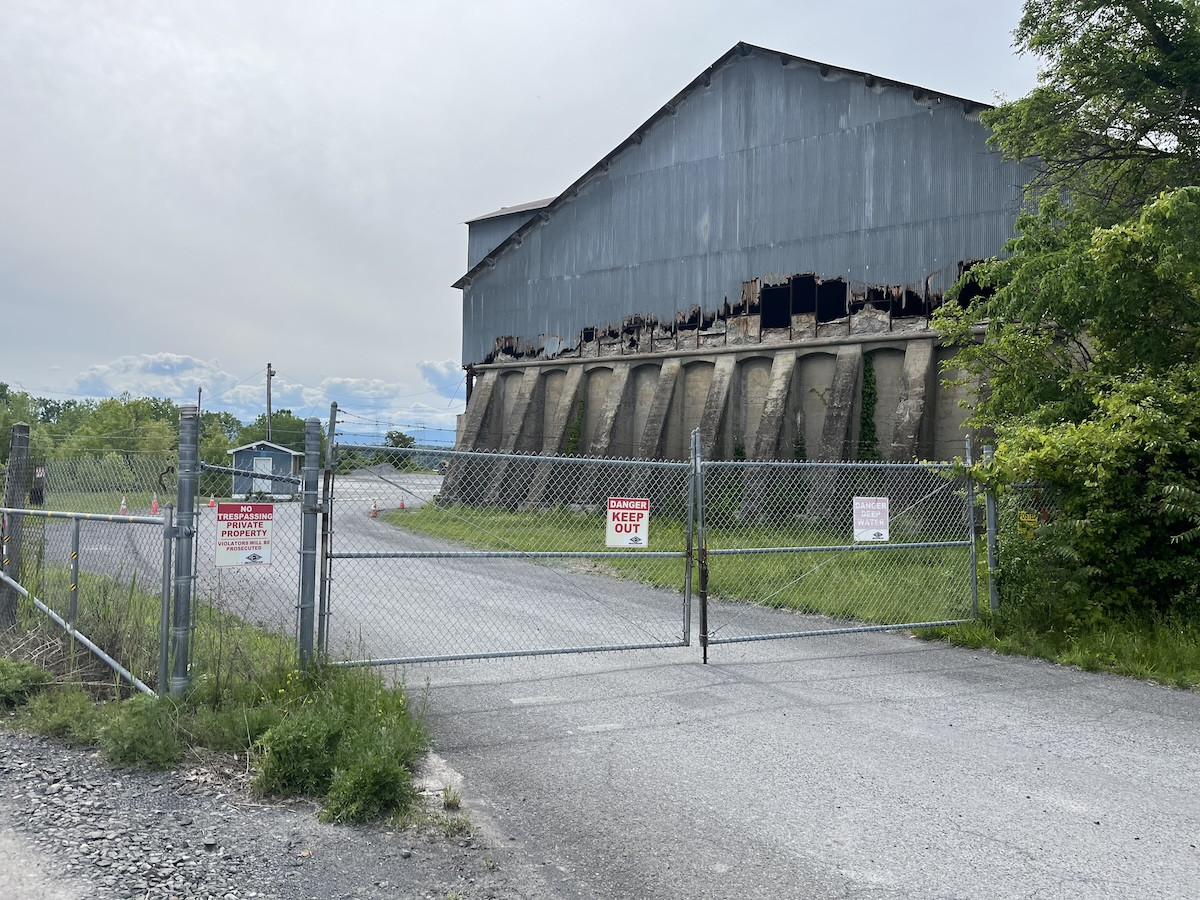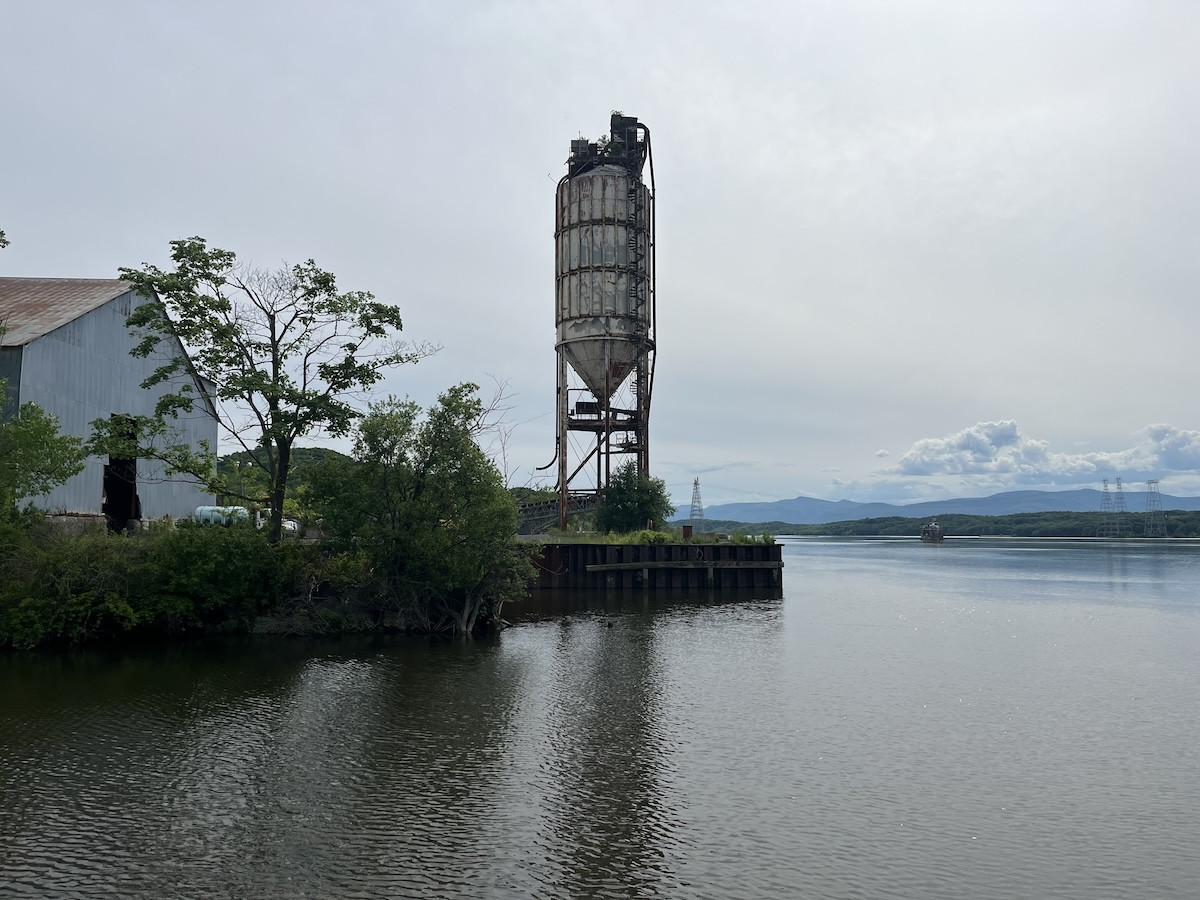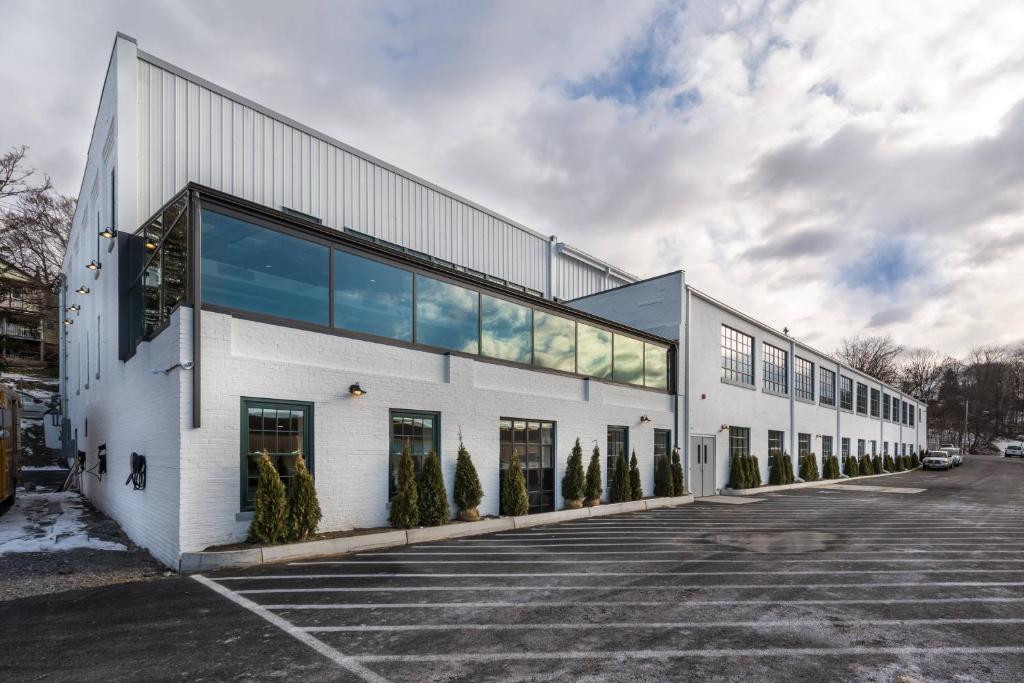Hudson Mayor Joins Call for Limits on Industrial Use at City Waterfront
A 30-year battle over industrial access to the Hudson waterfront may be nearing its end. Stakeholders want one last win.

A 30-year battle over industrial access to the Hudson waterfront may be nearing its end. Stakeholders want one last win.

For the first time, Hudson Mayor Kamal Johnson is speaking out in support of adding new conditions to A. Colarusso & Son controversial use permit for the deep water port at the city waterfront—marking a significant development in the city’s long-simmering dispute over industrial access at the increasingly active riverside.
Johnson, in an exclusive interview with RI, says he agrees with many of the requests outlined in a petition from concerned residents and stakeholders, including limits on hours of operation, the types of materials that can be transported, and safeguards against future industrial expansion by Colarusso or any future tenant.
“If you want to be a good neighbor in that area and protect the waterfront, [these conditions] make a lot of sense,” Johnson says. While emphasizing that Colarusso is a longstanding business with deep roots in the community, he adds, “We want to make sure the environment down there is everything we want it to be, and we also want those same restrictions and benefits no matter who’s down there.”
The mayor says the planning board’s ongoing use permit approval process needs to be halted for a few months so a multi-party working group can be convened to draft conditions and broker a compromise that addresses resident concerns while allowing the company to continue operating. “My goal is to get representatives from all the groups, and from [Colarusso], in a room to see where we agree—and really get this done,” Johnson said. “It’s been going on for so many years. I’d rather see this behind us and focus on investment in that area of our city.”
The conditional use permit application from Colarusso, a construction and mining company operating a haul road and deep-water dock facility on the Hudson River, has become a flashpoint in a larger battle over the future of the city’s waterfront. Since acquiring the site from multinational cement company Holcim in 2014, Colarusso has sought to widen and pave the South Bay causeway to streamline gravel transport and remove truck traffic from streets in the city’s most disadvantaged neighborhood.
Others argue the expansion of the causeway road also threatens to undermine decades of public investment in a mixed-use, environmentally conscious waterfront.
Representatives from Colarusso did not return requests for comment.
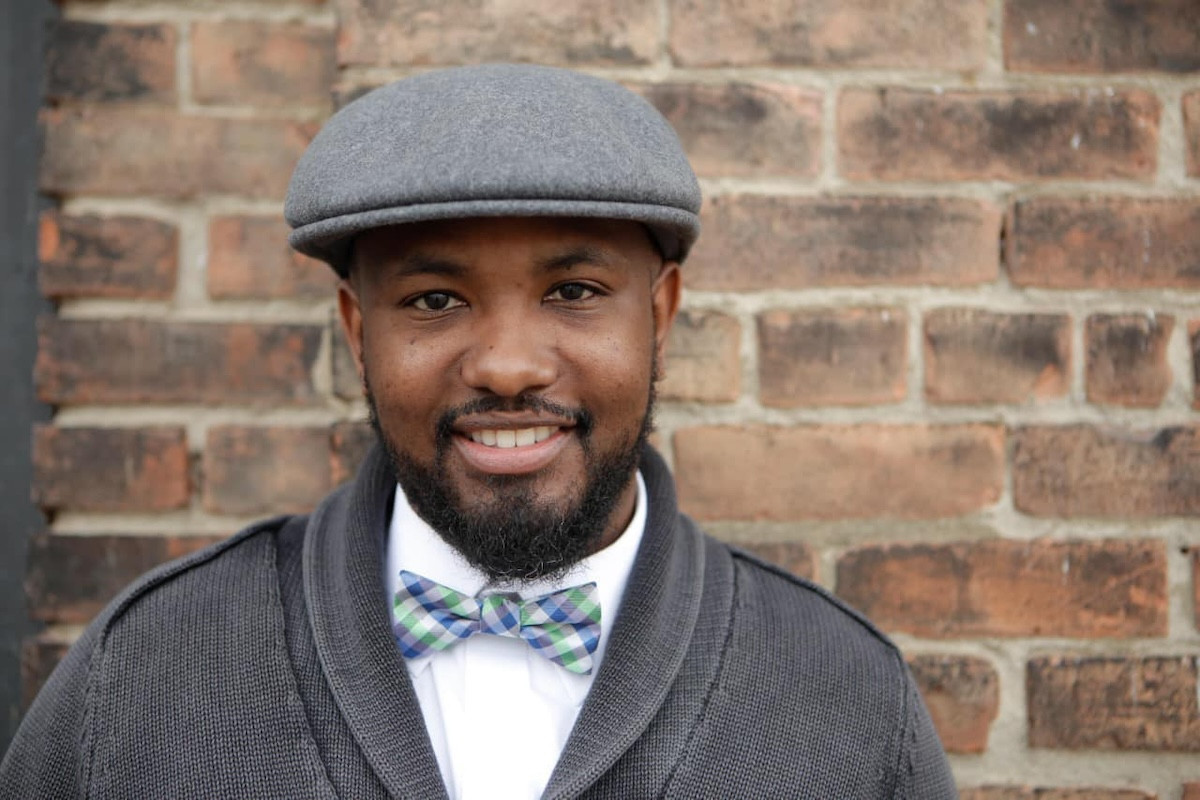
Hudson Mayor Kamal Johnson
Hudson’s current waterfront standoff has deep roots in one of the most dramatic environmental showdowns in New York State history. In the late 1990s, Swiss-owned St. Lawrence Cement (now Holcim) proposed building a massive coal-fired cement plant just outside the city. The operation was contingent on access to the Hudson riverfront. The project promised jobs but threatened to overwhelm the area with pollution and industrial infrastructure, overshadowing the landscape and fundamentally changing the trajectory of the city’s blossoming arts and tourism driven economy.
Local residents joined together to mount a campaign that drew national attention. The project was ultimately rejected by the state in 2005, invoking coastal consistency rules that declared it incompatible with Hudson’s waterfront character. The victory solidified the city’s shift toward public access, conservation, and cultural revitalization.
Though Hudson updated its zoning code and adopted a Local Waterfront Revitalization Plan in 2011, the state never certified the plan, and the waterfront remained open to industrial use through grandfathered operations. Colarusso inherited those rights—and has since been at the center of a boiling dispute.
Their work to repair the dock’s bulkhead without proper permitting in the 2010s triggered a city requirement to reapply for the conditional use permit at issue today. This gives the city’s Planning Board authority to impose updated conditions on what, how, and when materials can be shipped.

The Farm and Flea artisan fair brings thousands to the Basilica each year.
Developer Ben Fain, who has led a multi-phase revitalization effort directly adjacent to the port, has been among the most vocal in urging the city to act. “Frankly, it’s all in jeopardy,” Fain says of his multi-million-dollar investment. Fain owns Kitty’s cafe and restaurant and the Caboose event space across the street from the Hudson train station. He also recently bought the Wick Hotel, where he’s undertaking a total renovation. Unless Fain’s given reason to pull out of his ventures, he has additional plans for new housing, retail, and a Hudson branch of the Hawthorne Valley Farm Store, already in development. Johnson says these major projects are opportunities the city can't afford to see undercut by unregulated industrial expansion. There is also a plan in the works to convert the Dunn's Warehouse, very near to the port into a community center and outdoor pool.
“It’s not just the trucks,” says Fain, “It’s diesel engines, bulldozers, tugboats, conveyor belts—a full-scale industrial site across from public parks and family housing. That’s not balance.”
Like Johnson, Fain emphasizes that the issue is not about shutting Colarusso down. “We can coexist,” he says, “but the use transfers to any future owner. If Colarusso sells to a multinational, we could end up with a massive industrial site in the heart of our growing city.”
Melissa Auf der Maur, co-founder of the Basilica Hudson art and culture space (the closest business to the port), echoed the concern. “We spent years organizing around stopping development of the haul road and lost. Now the final opportunity is at the dock,” she says. “If we don't get conditions on that permit, everything happening down here could be compromised.”
Auf der Maur pointed to the cultural and economic energy that has transformed the waterfront since 2010, from events that draw thousands at her venue and Waterfront Wednesdays to the rise of new small businesses and family recreation. “This is a legacy decision,” she says. “What happens now determines whether Hudson evolves into a model riverfront city or slides back into something it fought hard to overcome.”
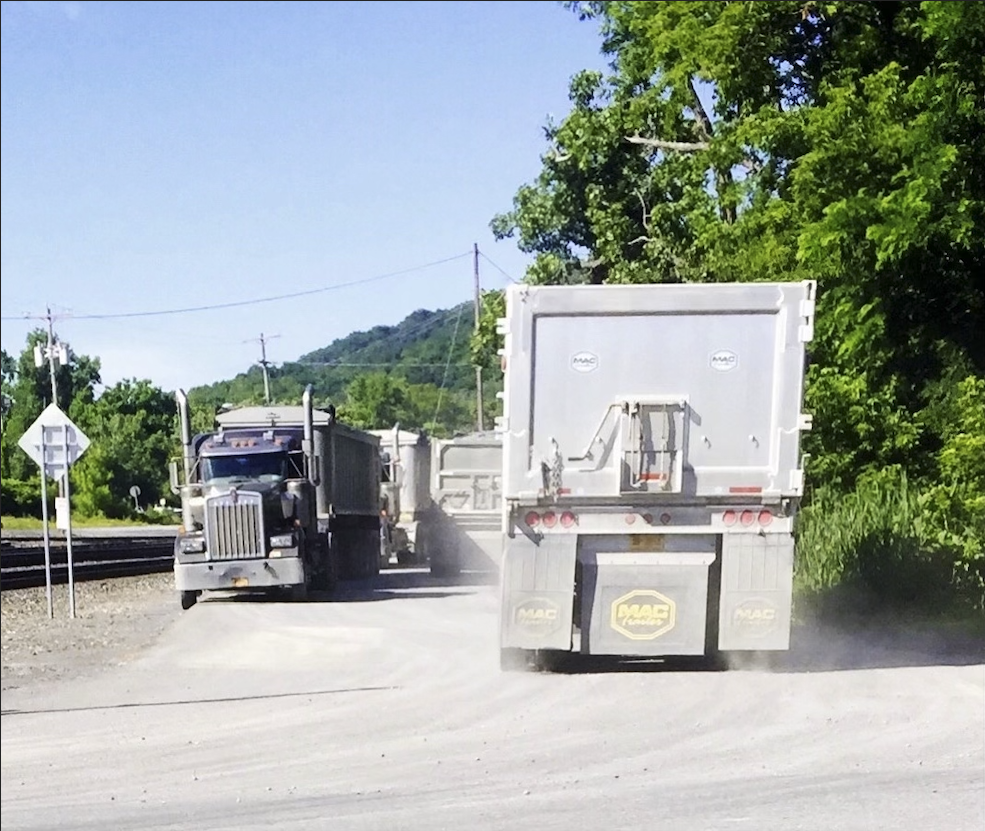
Truck Traffic at the waterfront.
The proposed conditions from residents include bans on hazardous materials, caps on truck frequency, and limits on port operation during weekends, holidays, and civic events. Johnson confirmed that he supports these specific restrictions. He says that in previous conversations with the Colarusso leadership, they “seemed amendable to probably 95 percent” of the proposed stipulations.
Johnson added that a short pause in the approval process now is necessary to ensure all parties have a say. “This is the chance to really plan for the future,” he says. “It’s not anything against Colarusso. It’s about the long-term balance between a historic business and a developing waterfront district.”
The mayor’s support adds momentum to a petition now signed by more than 1,200 residents calling on the Planning Board to use its authority to set firm, enforceable limits. “We’ve been getting all these letters,” Johnson says, “and some of them are very practical, especially when you want to protect the waterfront and be a good neighbor.”
Hudson stakeholders are increasingly focused on equity—ensuring no neighborhood bears a disproportionate burden from truck traffic, and that the waterfront continues to serve the public interest. “We should be united in getting trucks out of all neighborhoods,” Auf der Maur says.
“This isn’t about demonizing a business,” Fain adds. “It’s about proportional impact.”
Johnson, who’s facing Democratic primary challengers for the first time this June, says his goal is to have the working group reach a resolution within the next few months. “I just want to get this done,” he says. “It’s a high priority to finally put this issue behind us.”
